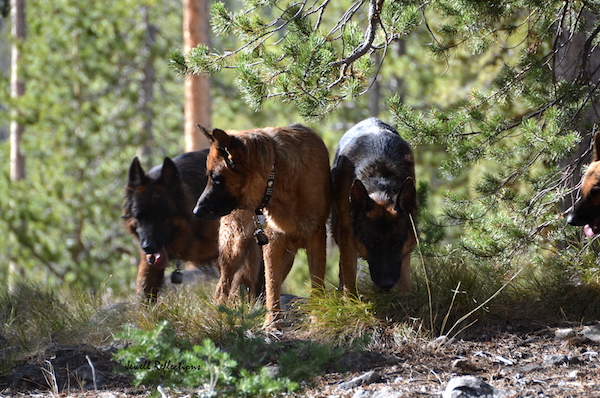
By Fran Jewell
Never has there been a more highly debated conflict in opinion among dog trainers in the history of time. Either one purports the “Dominance Myth” or you are just wrong. How difficult does this make finding a dog trainer for the everyday dog owner?
In my experience, “dominance” has been equated with harsh punishment. In my humble opinion, it should not be. My concern is that anyone can do all the reading they want to learn about dog behavior, but what really counts is experience, the experienced eye and the openness to see things as they are, not what a book tells them.
Every book is different. Anyone can hang out their shingle as a trainer with literally little experience or credentials. Now, with all the technology available to us, there are trainers online, on podcasts, in webinars and in books that have learned how to market their business using so many buzz words, they sound knowledgeable. It is true that many have totally credible experience and articulate themselves well. There are others that profess incredible knowledge without experience to back it up. What is hard for the dog-owning community is sifting through all of that to find what resonates for you and your dog.
There is no greater teacher than experience. Just what does that mean in relationship to dominance? Let’s take an example of breeding dogs and having a litter of puppies. The first time I bred a litter, I was shocked at the romance between the sire and the dam. Of course, there are dogs that are bred that have no relationship with each other and essentially it is a course of action. However, when the sire and dam have a relationship, there is a romance and so much dog behavior to learn for us humans. The female will often mount the male to get him interested and to signal him she is ready. She may also put her head over his shoulder, which is so many times associated with dominance. In the dog-training world, and even for those who breed but breed in a very structured and matter-of-fact way, they may never see that behavior. What it taught me is that mounting/humping had nothing to do with dominance but was a playful gesture that even males will do with other males, or females with females. It can be a friendly or playful OR, yes, it can be a dominance gesture.
Height is another very subtle but incredibly significant dominance gesture. When a high-ranking dog wants to assert himself, he will seek a higher spot to go to. Watch closely the next time you see two dogs together and see who seeks a higher spot. This is even true among dogs and humans. Dogs that are status seekers or truly higher in social rank will seek the back of the sofa. In a two-dog family, where there is a big dog and a little dog, the little dog may actually be the higher-ranking dog and walk along the back of the sofa to be higher in social status than the big dog.
Height is so significant that if you really watch, dogs will pee HIGHER than the dog that peed there before them, or over another dog’s pee.
To most dog owners and many trainers, they may see just the dog liking to sleep on the back of the sofa, or on your head. They may even see this as affectionate. This is very subtle dominance in both of these cases and has nothing to do with punishment.
Tiny puppies will learn dominance from their mother or another high-ranking dog that will get up and walk away from the puppies.
Dominance is subtle but very alive in the dog world. Dogs are still 99% or MORE genetically the same as wolves. THIS IS SCIENCE. The only difference is that dogs have been selected over thousands of years as companions for their biddability or willingness to be trained by humans and becoming helpers to humans. Dogs still maintain all the other natural instinctive behaviors of wolves, including their prey drive, scent drive, food drive, and denning instinct. Ever notice your dog sleeping under a table/chair or other object?
Social dominance or hierarchy is present in all creatures. Ask any biologist. Dominance should not be associated with punishment. However, it is critical to the mental health of dogs that they have clear leadership which I equate to “dominance.” It is important that we humans honor our dogs for who they are; a gorgeous and magnificent species different than us. We honor them when we understand them and help them to feel safe through dominance or “leadership.”
Fran Jewell is a dog behavior consultant, NADOI-certified instructor and vice president. She owns Positive Puppy Dog Training LLC and can be reached at (208) 721-7221.


